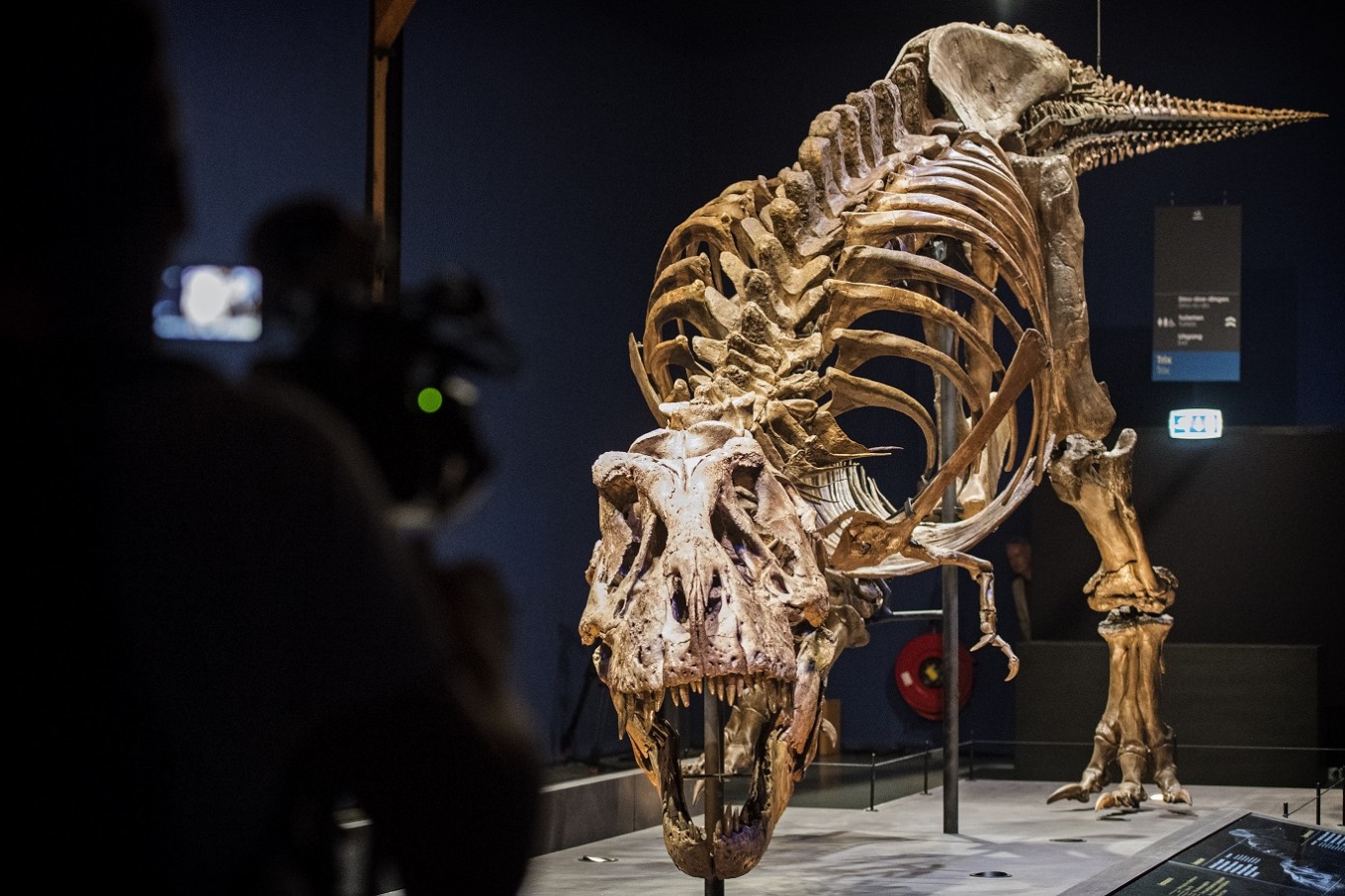Popular Reads
Top Results
Can't find what you're looking for?
View all search resultsPopular Reads
Top Results
Can't find what you're looking for?
View all search resultsT. rex was not feathery, study says
Change text size
Gift Premium Articles
to Anyone
T
yrannosaurus rex had scales, not feathers, said a study Wednesday which rescues the giant lizard's reputation as a fearsome killer with a rough-and-tough hide.
Recent research has claimed to provide evidence for feathers in ancestors of T. rex, and suggested the iconic carnivore may itself have sported bird-like plumage rather than reptilian scales.
Those findings challenged a long-held contention that large-bodied dinos had no feathers, requiring them for neither warmth nor flight.
For the new study, an international team of scientists tracked down museum samples of skin from T. rex and several of its cousins in the tyrannosaurid family, and compiled a database of fossilised hide impressions.
These included skin patches of the neck, pelvis and tail of a T. rex from the Houston Museum of Natural Science, as well as samples from four other members of the extended tyrannosaurid family.
Read also: No bone could resist T. Rex's pulverizing bite
That group roamed the planet during the Late Cretaceous, which extended from 99 million to 65.5 million years ago, when an asteroid slammed into Earth and wiped out all land-dwelling dinos.
The team concluded that "extensive feather coverings" in tyrannosaurids -- which lived much earlier -- were already lost in the common forefather of T. rex and its cousins about the time the Late Cretaceous began.
The data provides "compelling evidence" of an entirely scaly covering for T. rex, the team wrote in the Royal Society journal Biology Letters.
"Our discovery of fossilised scaly skin similar to that of modern reptiles on the bodies of a wide variety of tyrannosaur species (including T. rex)... paints a more traditional scaly-skinned picture of these huge predators," they wrote in a press summary.
This suggested, in turn, "that most (if not all) large-bodied tyrannosaurids were scaly and, if partly feathered, these were limited to the dorsum (back)," they wrote.
The study begged the question of why -- after T. Rex's ancestors evolved feathers from an even more ancient scaly forebear -- the giant tyrannosaurs reverted back to scales.
Paleontologists believe the first birds appeared 150 million years ago and were descendants of small feathered dinosaurs.
The first dino feathers were simple hollow shafts, which evolved over time into something resembling their modern shape, engineered for flight.











